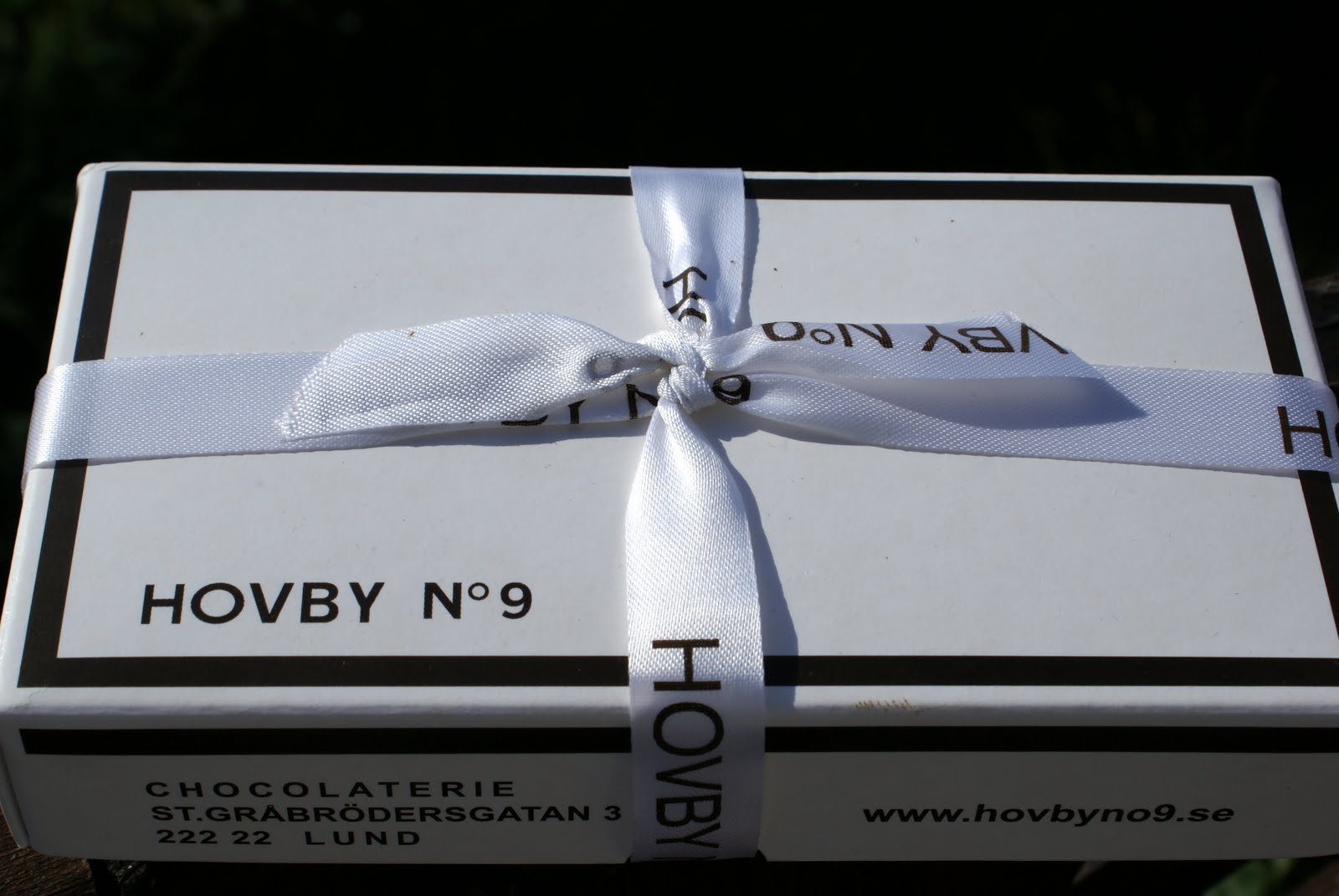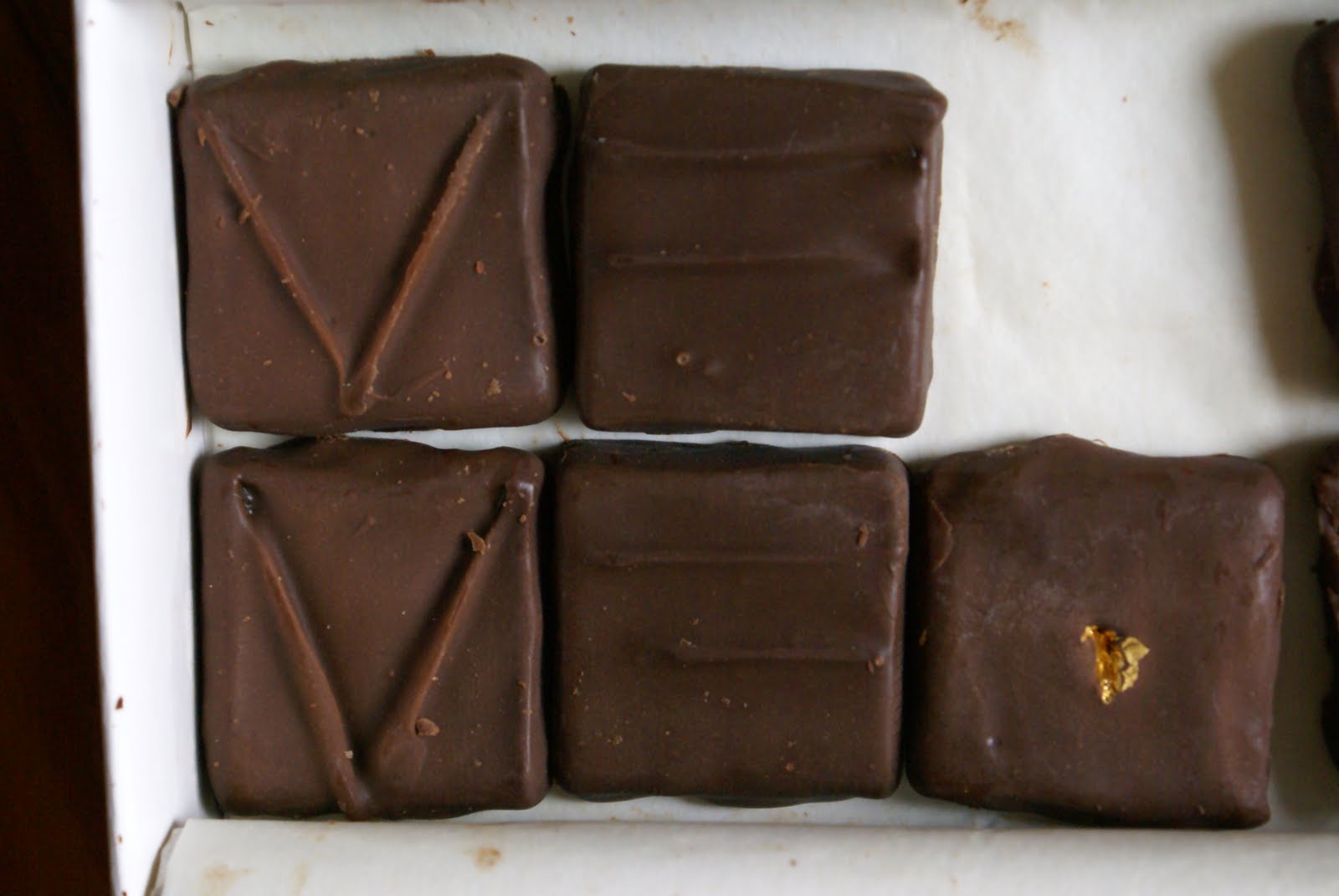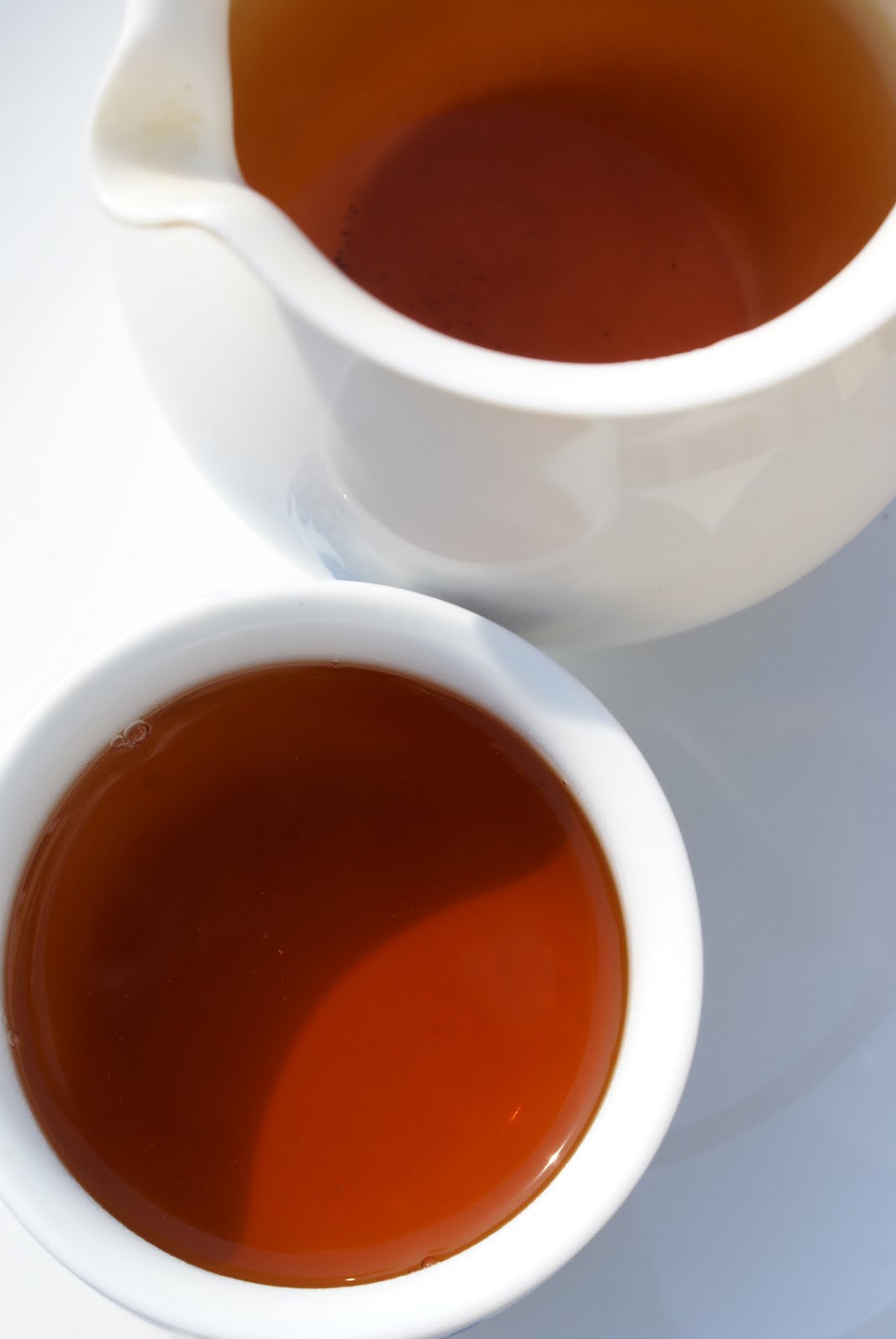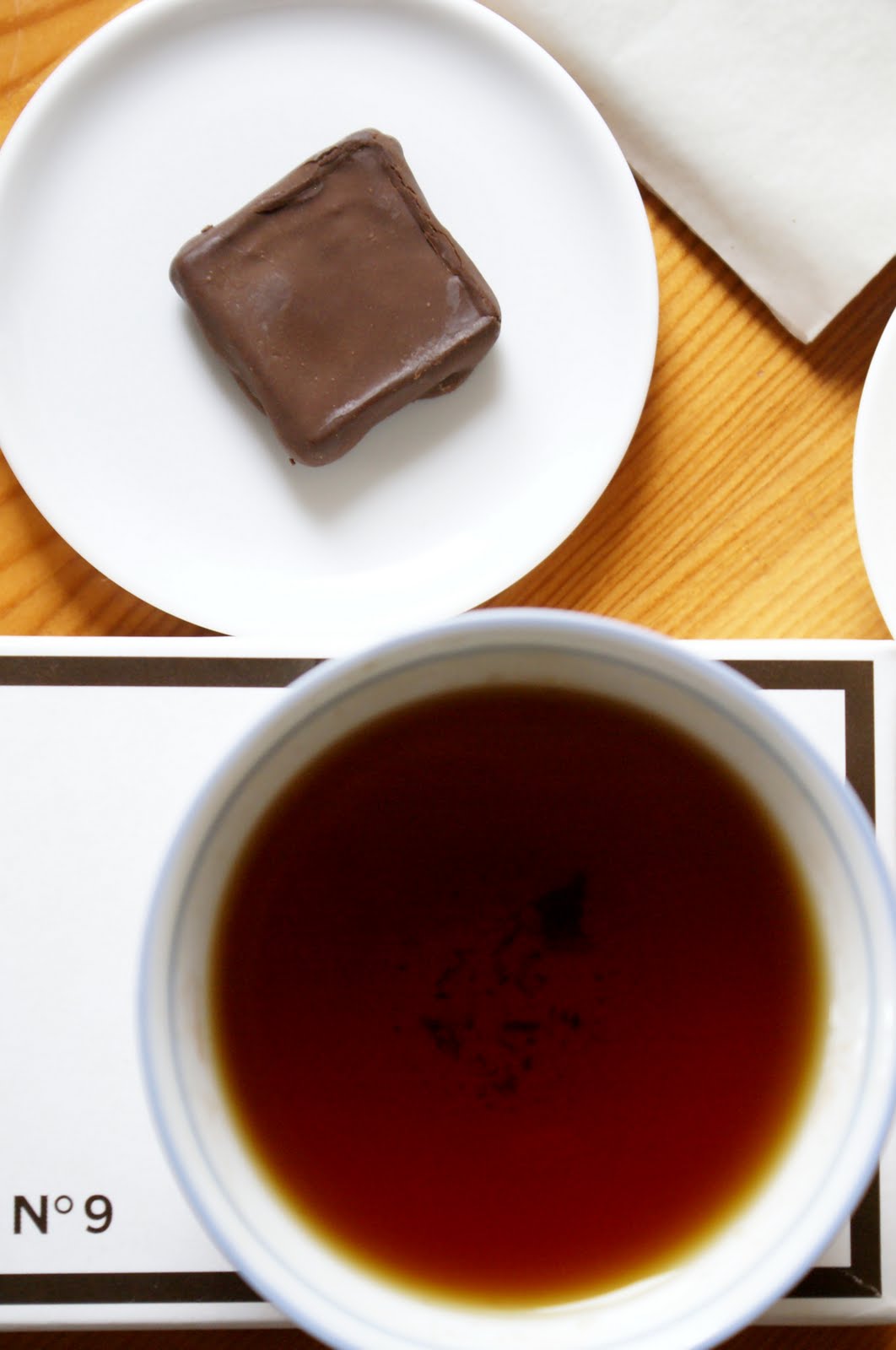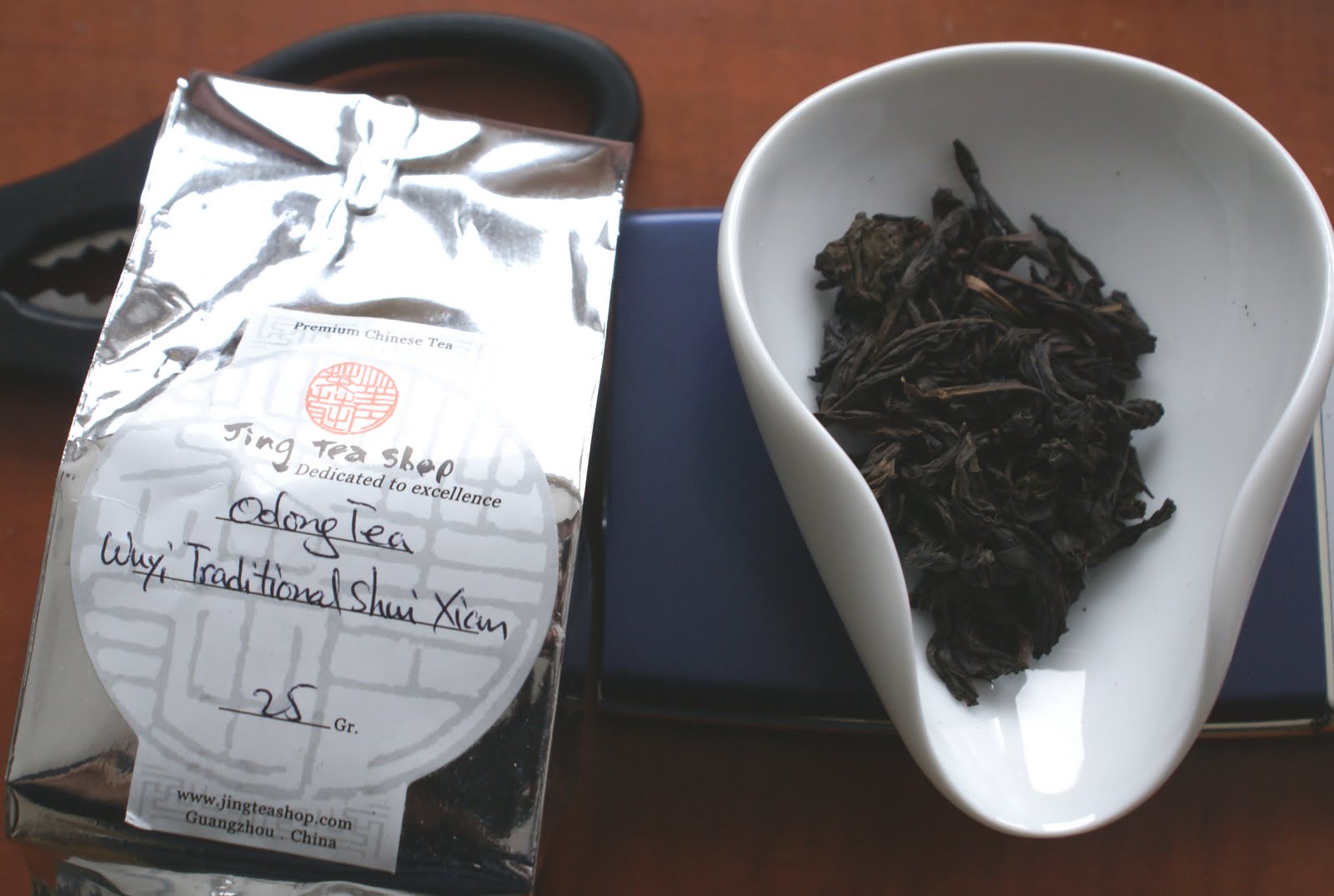Tea and chocolate
Posted on 19 September 2009
It’s always rewarding to have some response to one’s blogging efforts. Even more so when this response, and the resulting dialogue, leads to exchange not only of opinion but also of more tangible ware. It was a delightful surprise when I received a box of chocolates from Greger Nilsson, a reader of this blog from the ancient Swedish city of Lund.
Not a box of ‘thank you’ chocolates from Milka or the like, but a box of serious artisanal chocolates from Lund’s chocolatier Hovby No. 9. These pralines are made exclusively of Venezuelan Criollo Carúpano cocoa and have a very ‘hand-made’ aspect to them. My box included a wide variety of fillings and flavours but even with the heftier kinds, such as ginger or chili, the dominant flavour remained the sweet, earthy tang of the Criollo. This is good.
After the intellectual impulse and the positive response that I experienced with my strawberry & tea matching article, I thought I’d repeat the exercise with chocolate. Mind you, it’s not a natural match. Many teas focus on subtlety, light flowery and fruity aromas, and intricate details of mouthfeel, while chocolate is a textural blockbuster that will overwhelm almost any other food or drink. (It’s a notoriously tricky partner for wine, too, leading some authors to state it’s impossible to match satisfyingly, and recommend cognac instead).
I think it’s an interesting issue because of the cultural, circumstantial aspect involved. In Europe, we often take a smaller afternoon meal between lunch and dinner, where sweets are served alongside hot drinks. Desserts are also served after lunch and/dinner with the same drinks. I bet most people’s choice of match with pralines or chocolate dessert would be coffee, but many people prefer tea and have it regardless of whether it’s theoretically a good match. When it happens to me, instead of dismissing it I prefer to steer guests towards a specific type of tea that can survive the encounter.
So here I brewed four types of tea to see how they fare with the pralines. My rationale was that in order to manage the intense earthy, bitterish flavours of the chocolate and its challengingly mouth-coating texture, a tea would have to be 1) roasted (coffee beans are also roasted during processing; the candied fruit and nutty aromas that are the result of tea roasting are similar to those encountered in chocolate), 2) oxidised (=black tea; tea oxidation increases tannins which are also plentiful in chocolate), or 3) fermented (=shu, or ‘ripe’ puer, or an older, slow-fermented sheng puer; fermentation creates a variety of powerful, evolved, tertiary aromas that are similar to those encountered in chocolate which also undergoes a type of fermentation during processing). Teas I don’t think have a chance matching include all greens (too light in body and flavour), whites (same reason), green oolongs (their delicate aromas would be wasted), young ‘green’ sheng puer (which tend to be quite bitter, plus I don’t see their vegetal aromatic spectrum matching well). Do you agree?
Green tea: 2008 Miyabi Sencha
I tried this for fun, and to check whether my above-mentioned assumptions are right. I expected a total clash and disaster while in the end, it’s not a happy combination that I would repeat but there’s no big pain either. (After all, there are some chocolate pralines filled with matcha). The tea’s greenness and grassy tang are far less a problem than I anticipated (obliterated as they are by the chocolate’s chewy texture), while the textural density of the warm tea does a decent job in balancing the chocolate’s thickness. The main problem is a complete lack of flavour correspondence.
Black tea: 2008 Hegang No. 18
I chose a black tea from Taiwan that’s quite light in body and fruity (notes of dried fruit), less tannic and oxidised than your average Yunnan black. With chocolate, this is better than I expected. It’s obviously in the background to the very intense, mouth-filling textural notes of the pralinesbut thanks to its warmth, effectively cleans the palate with a waft of dried fruits intensity. This works especially well with pralines with more savoury fillings such as chili, cardamom etc.
Puer: 1990 CNNP Menghai Brick
I chose a nearly 20-year-old sheng (raw) puer. This is less exciting than expected. Perhaps because the tea is of a rather light, not so wet-storage driven kind. Shows a little indifferent. Interestingly, the attack of the tea when you take some into your mouth manages to cover the thick chocolatey texture, but the finish – mild and untannic as it is – fades away, leaving the chocolatey notes naked. Often in wine & food matching we speak of a wine standing besides the dish, meaning both retain some of their original flavour but there’s no interaction or fusion. It’s exactly what is happening here.
Roasted oolong: 2008 Traditional Shuixian
Interestingly this tea lacks power to match with the chocolate. The roasted, smokey aromas are a good pairing with the chocolatey perfume, and the mild pâtisserie notes that are so typical for this type of tea (brioche, short pastry, almonds, red fruit jam) are also fine. But it’s the slight lack of flavour intensity at mid-palate (again something I find typical of Wuyi tea: they are very intensely scented and have fine structure but often are a little ‘hollow’ in the middle to employ a vinous term) that is a problem precisely when the thick, chewy texture of the chocolate begins to make itself felt.


